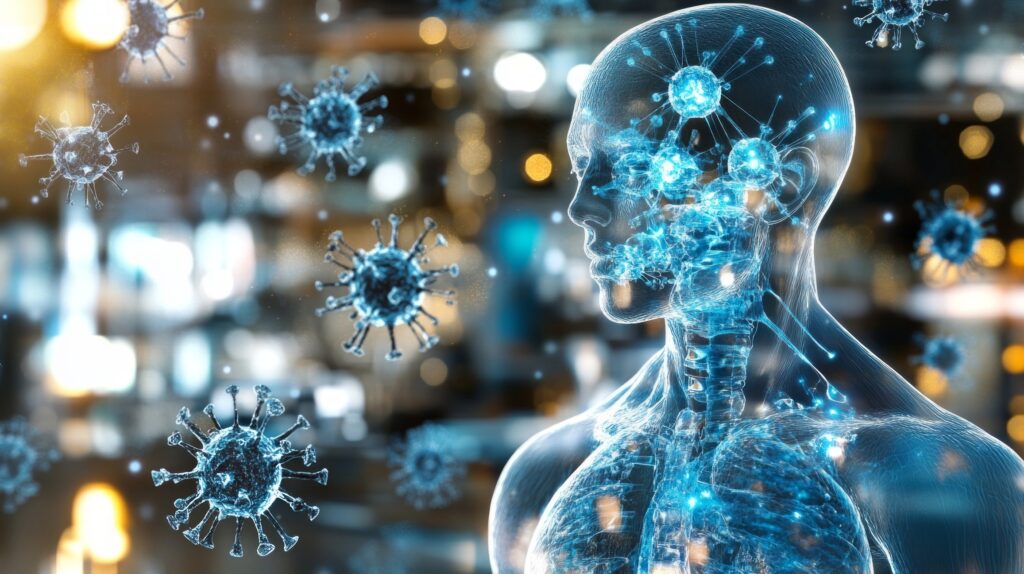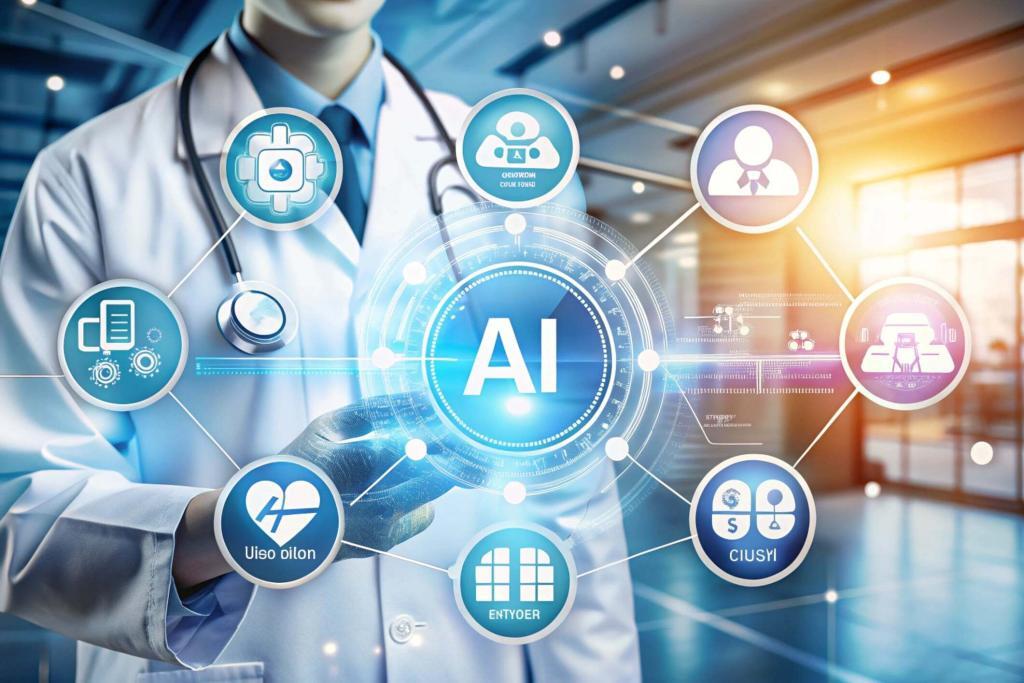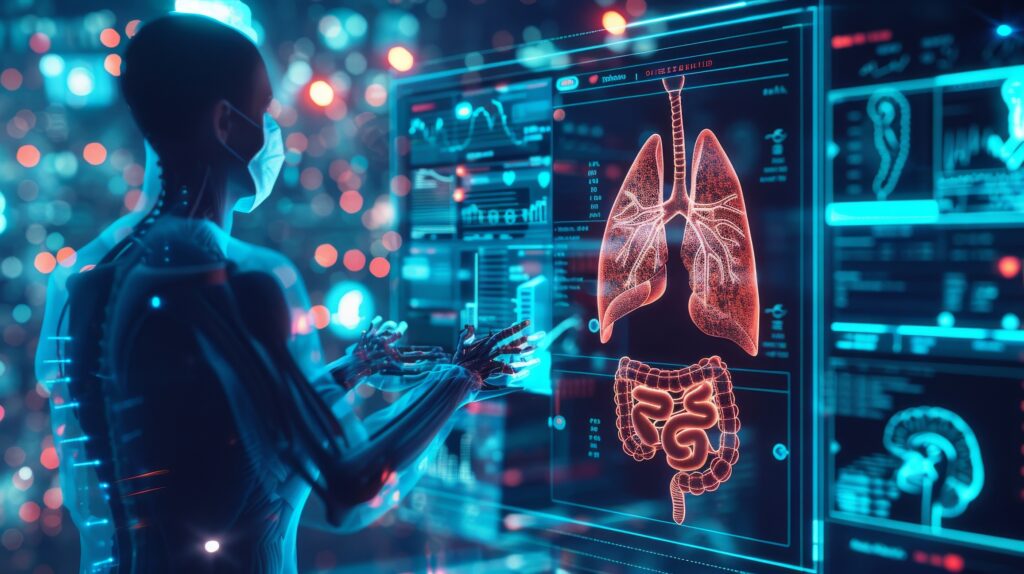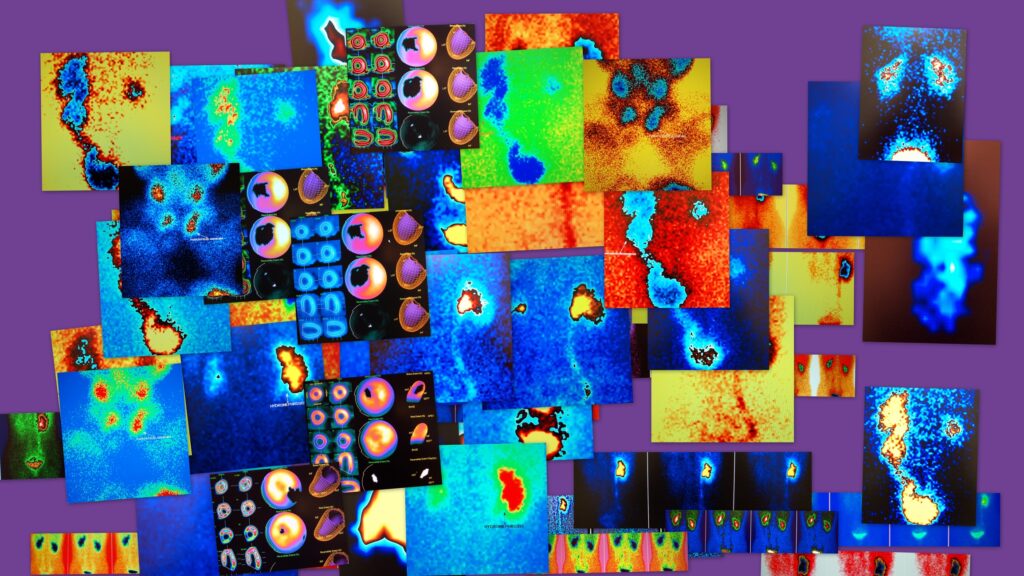Summary: Generative artificial intelligence in medical imaging is reshaping diagnostic imaging and radiology by enabling the creation, enhancement, and interpretation of complex medical images with unprecedented accuracy. Using advanced machine learning techniques such as generative adversarial networks, variational autoencoders, and diffusion models, generative AI can produce synthetic medical images, enhance resolution, restore degraded scans, and support AI-powered image reconstruction. These capabilities enhance data quality, streamline workflows, and facilitate early, accurate clinical decision-making. Generative AI in radiology addresses limitations in conventional imaging, reduces clinician workload, and enhances diagnostic precision. However, its adoption in healthcare requires careful attention to ethical, technical, and regulatory issues, including data privacy, clinical validation, and responsible implementation. This article examines the principles, clinical applications, benefits, challenges, and future of generative AI in medical imaging, highlighting its transformative potential for patient care and research.
Keywords: Generative Artificial Intelligence in Medical Imaging, AI in Radiology, AI-powered Image Reconstruction, Synthetic Medical Images, Diagnostic Imaging, Healthcare AI Innovation
Introduction: The Rise of Generative AI in Medical Imaging
Medical imaging is the foundation of modern diagnostic medicine, offering clinicians the ability to visualise internal anatomy and physiological processes without invasive procedures. From magnetic resonance imaging (MRI) and computed tomography (CT) to ultrasound, positron emission tomography (PET), single-photon emission computed tomography (SPECT), and digital radiography, imaging modalities play a crucial role in diagnosis, treatment planning, and disease monitoring.
However, traditional imaging workflows face persistent challenges. MRI can be time-consuming, causing discomfort and limiting patient throughput. CT involves ionising radiation, which must be minimised for paediatric and repeat patients. Ultrasound image quality varies with operator skill, while PET imaging requires expensive, short-lived radiotracers. Across all modalities, annotated imaging datasets for AI training are limited, especially for rare conditions.
Generative artificial intelligence in medical imaging offers solutions to these limitations. By learning patterns from vast datasets, generative AI models can perform AI-powered image reconstruction, synthesise realistic scans, enhance resolution, and even simulate disease progression. This is not merely image post-processing, but a shift towards AI systems capable of creating clinically valuable visual information that is aligned with true anatomy and physiology.
Principles of Generative AI for Imaging and Radiology
Generative AI differs from conventional AI algorithms in that it creates new data rather than simply classifying existing inputs. By modelling the statistical distribution of imaging data, these algorithms can generate realistic synthetic medical images.
Generative Adversarial Networks (GANs) in Radiology
GANs consist of a generator and a discriminator network that train in competition. The generator creates synthetic medical images, while the discriminator learns to distinguish real from AI-generated data. This adversarial process improves the generator until its synthetic output is almost indistinguishable from authentic scans. GANs in radiology are used for rapid MRI reconstruction, low-dose CT enhancement, and cross-modality synthesis, such as generating CT from MRI data for radiotherapy planning.
Variational Autoencoders (VAEs) for Medical Image Simulation
VAEs encode medical images into a compressed latent representation, which is then decoded back. Adjusting latent variables allows the simulation of anatomical variations or disease stages, providing datasets for training diagnostic AI tools or studying disease progression in controlled conditions.
Diffusion Models for High-Fidelity Imaging
Diffusion models gradually transform random noise into coherent images through a stepwise denoising process. Their fine structural accuracy makes them promising for applications in neuroimaging, vascular mapping, and AI-powered image reconstruction, where detail and clarity are critical.
Clinical Applications of Generative AI in Medical Imaging
Generative AI is already demonstrating practical benefits in clinical radiology and diagnostic imaging.
AI-Powered Image Reconstruction and Scan Acceleration
Generative models enable high-quality MRI reconstruction from incomplete datasets, significantly reducing scan times. In CT, they reconstruct diagnostic images from low-dose acquisitions, lowering radiation exposure while preserving diagnostic quality.
Cross-Modality Image Generation
In oncology and radiotherapy, pseudo-CT generation from MRI scans removes the need for an additional CT scan. PET imaging benefits from noise reduction and resolution enhancement, enabling shorter acquisition times or reduced radiotracer doses.
Data Augmentation with Synthetic Medical Images
Training AI diagnostic models requires vast datasets. Generative AI produces realistic synthetic medical images to supplement limited datasets, improving model accuracy, generalisability, and robustness.
Image Enhancement and Restoration in Radiology
Generative AI corrects motion artefacts, reduces noise, and increases resolution in scans from older or portable equipment. This is particularly valuable in emergency medicine, paediatrics, and low-resource healthcare environments.
Disease Progression Simulation for Predictive Diagnostics
By creating hypothetical future scans, generative AI allows clinicians to visualise disease progression. In neurodegenerative diseases, oncology, and cardiovascular care, this supports proactive, personalised treatment planning.
Benefits of Generative AI for Clinical Practice and Research
Generative artificial intelligence in medical imaging enhances both operational efficiency and diagnostic precision.
In clinical settings, faster imaging improves patient comfort, increases scanner availability, and reduces waiting times. Lower radiation doses from enhanced CT reconstruction improve patient safety, especially for children and oncology patients. Improved image quality enables the earlier detection of subtle pathologies, thereby boosting diagnostic confidence.
In research, synthetic medical images enable large-scale training of AI models without compromising patient privacy. They facilitate collaboration across institutions, accelerate algorithm development, and provide simulated datasets for rare conditions or longitudinal disease studies.
Ethical, Regulatory, and Technical Challenges in AI-Driven Medical Imaging
The implementation of generative AI in healthcare must address several challenges.
Data Privacy and Synthetic Image Security
Even synthetic medical images may contain identifiable features if models are not adequately trained. Robust anonymisation protocols and privacy-preserving AI methods are essential to ensure compliance with UK GDPR and global data protection laws.
Clinical Validation for Trustworthy AI in Radiology
Generative AI must be validated in diverse clinical settings. Without multi-centre testing, models risk producing artefacts or misleading features that could result in misdiagnosis.
Regulatory Frameworks for AI in Healthcare Imaging
Regulators, such as the MHRA and FDA, are adapting their approval processes for AI tools. Generative AI’s variable outputs require new standards for reproducibility, interpretability, and safety.
Human Oversight and Accountability
Clinicians must retain final responsibility for interpreting AI-generated medical images. Clear guidelines are needed for accountability in cases of AI-related diagnostic errors.
Access and Equity in AI Imaging Technology
High computational demands for training diffusion models and GANs may limit adoption in resource-constrained healthcare systems, potentially widening global health inequalities unless equitable solutions are developed.
Future Outlook for Generative AI in Radiology and Medical Imaging
Generative AI is likely to become a core element of medical imaging in the next decade.
Short-term integration will involve embedding AI-powered image reconstruction in scanners and imaging software, enabling real-time processing. Mid-term innovations may link generative AI with predictive analytics for personalised diagnostics.
Research will increasingly use synthetic medical images alongside federated learning to create global AI models without centralising patient data. In the long term, generative AI could underpin dynamic, continuously updated imaging, combining real and simulated data to guide live interventions and adaptive treatment plans.
The future success of generative artificial intelligence in medical imaging will depend on technological advancements, regulatory clarity, ethical responsibility, and close collaboration among AI developers, clinicians, and policymakers.
Disclaimer
The information provided in this article is for educational and informational purposes only. It does not constitute medical advice, diagnosis, or treatment, and should not be relied upon as a substitute for professional medical judgment. The views expressed are those of the author(s) and do not necessarily reflect the opinions or policies of Open MedScience, its affiliates, or any referenced organisations.
While efforts have been made to ensure the accuracy and currency of the content, no guarantee is given regarding its completeness or suitability for any specific purpose. Generative artificial intelligence in medical imaging is an evolving field, and developments, regulations, and best practices are likely to change over time. Readers should consult qualified healthcare professionals and relevant regulatory bodies before making clinical or operational decisions based on the information presented.
Open MedScience accepts no liability for any loss, injury, or damage arising from the use of, or reliance on, the information contained herein.
You are here: home » diagnostic medical imaging blog »



